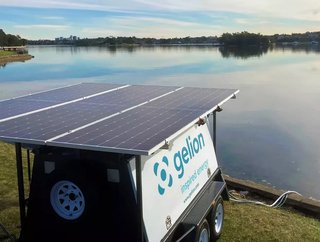Fully charged: zinc-bromide batteries and energy storage

Global economies are ramping up the transition to a net-zero-carbon economy by 2050. Renewable energy is fundamental to achieving this goal and energy storage will be needed everywhere, whether it is stabilising the grid, supporting industry or managing domestic power consumption.
Over the past 30 years, lithium-ion (Li-ion) technology has propelled the storage market forward. However, the nature of Li-ion chemistry means that safely deploying, operating and maintaining the batteries can be costly and inefficient – particularly in tough environments. This is where zinc-bromide batteries come into play.
The next generation of batteries
Zinc-bromide (ZnBr2) redox chemistry is based on non-toxic materials that are low cost and globally well-distributed. Using a unique gel, Gelion has transformed a 150-year old battery technology into a modern and useful energy store device – delivering a competitive battery technology with excellent levelised cost of energy storage characteristics that is particularly well suited to solar energy shifting.
The batteries are extremely safe (neither will they catch fire when penetrated by a high velocity army bullet, nor when placed on a 700°C steel plate for half an hour). Indeed, despite the heat they kept working and could even be recharged. They can be repeatedly discharged from 100% charge to zero volts without harming performance, displaying a abuse tolerance in terms of state-of-charge management, while also working across a wide temperature range all the way up to 50°C.
This makes them suitable for use in harsh, remote off-grid environments and on-grid commercial and industrial applications in the built environment, especially as there are no requirements for fire-suppression or airconditioning systems. In combination with their parallel plate design, which allows them to be built using only moderately re-worked lead acid manufacturing capabilities, this gives them a significant edge – whether in the field, at an industrial plant or a solar farm.
Indeed, the CapEx required for re-tuning existing lead acid manufacturing at 1GWh annual production capacity is 6-7 times cheaper when compared to setting up a lithium-ion greenfield project of the same capacity.
Adding to this the very high recyclability and life-time carbon efficiency of the batteries, the technology displays very strong Environmental, Social, and Governance credentials that align with six of the UN Sustainable Development Goals – delivering an environmentally friendly solution to meet energy-storage needs for today and tomorrow.
Charging up the energy transition
As we move in many countries towards legally binding net-zero goals, safe, cost-effective and reliable solutions will be needed to meet demand. A highly differentiated energy supply system will be required to get us there. Zinc-bromide chemistry is a clear, emerging choice for meeting some of the demands of the growing stationary energy storage market and providing the commercially viable solutions underpinning a sustainable global economy.
Professor Thomas Maschmeyer is Founder & Principal Technology Advisor at Gelion Technologies






